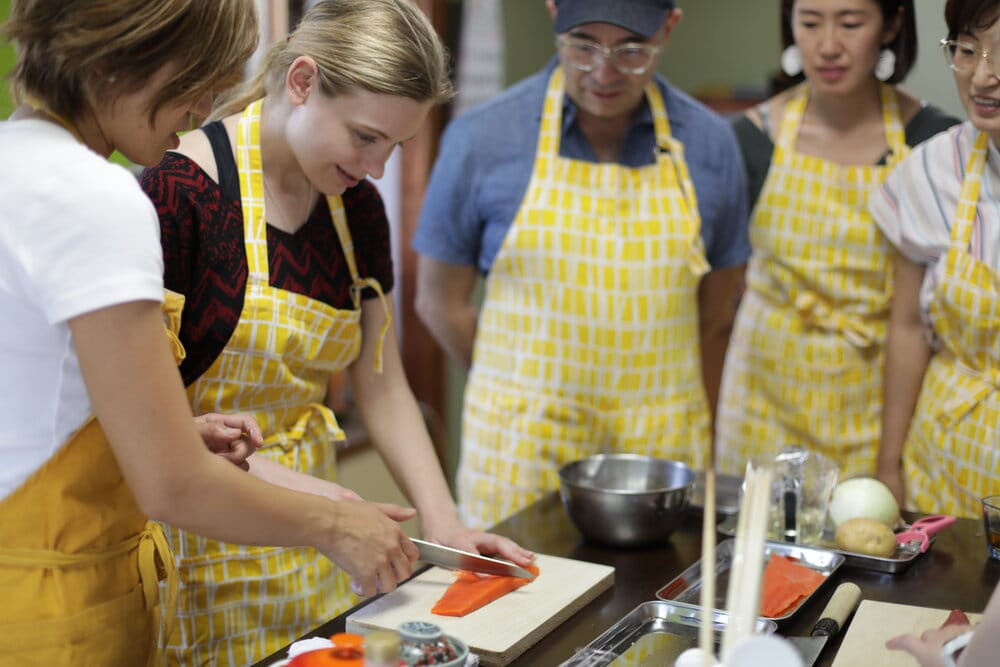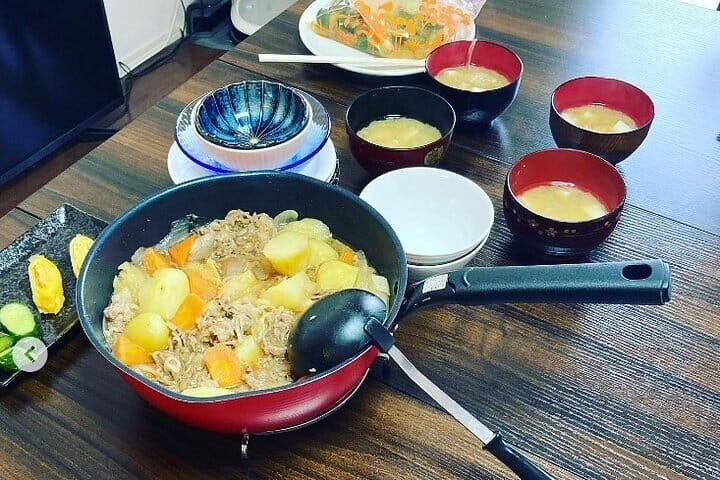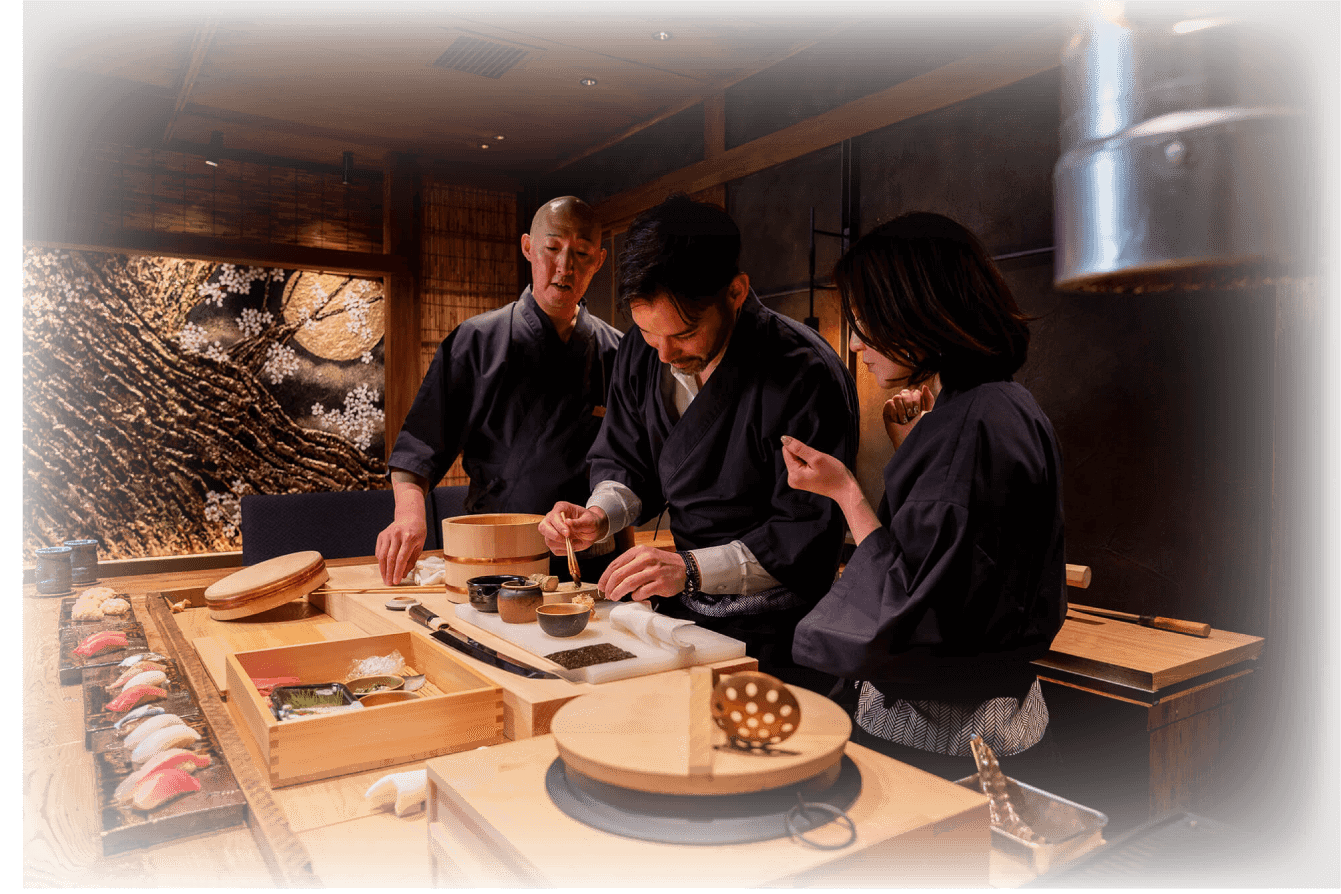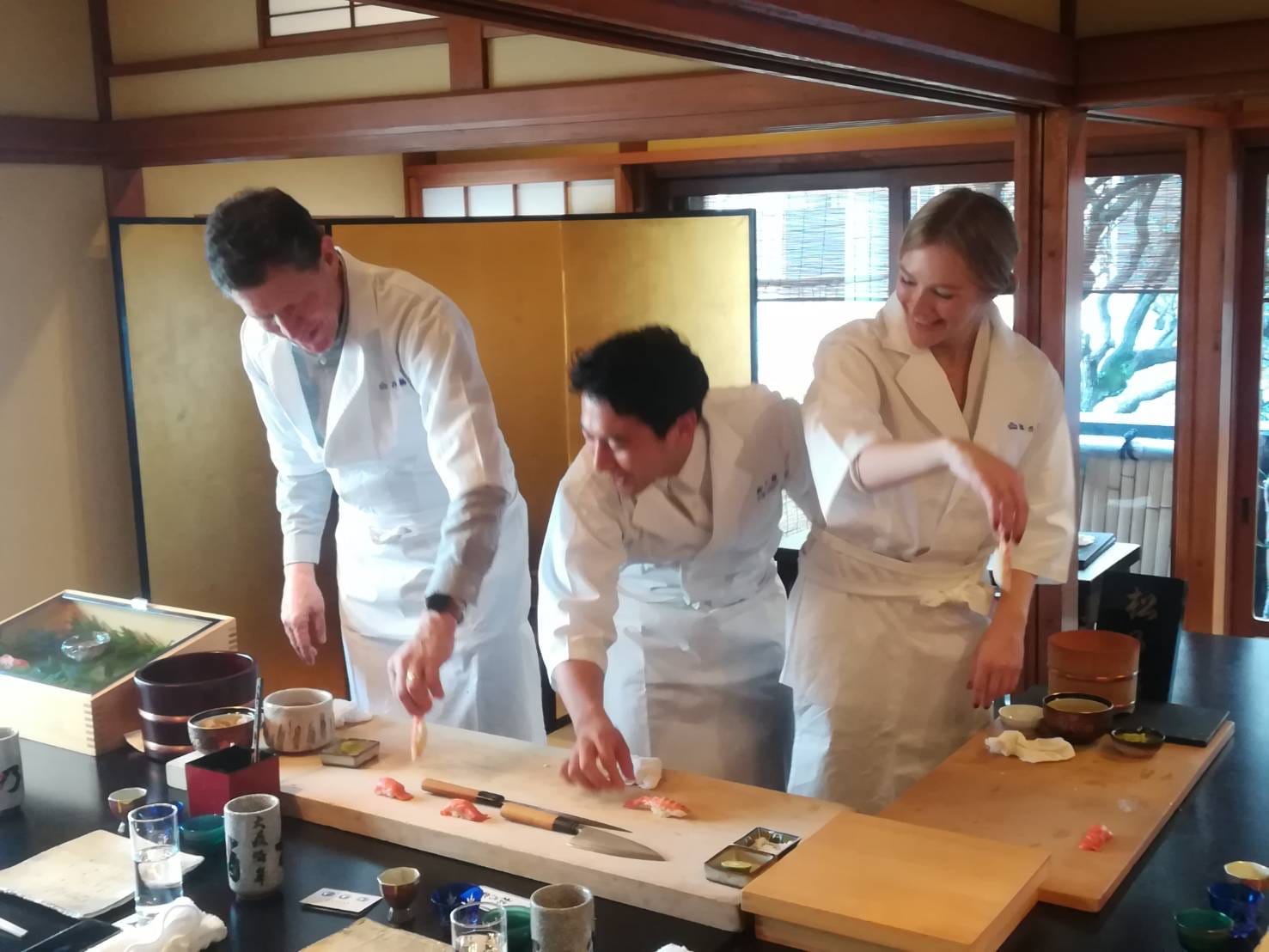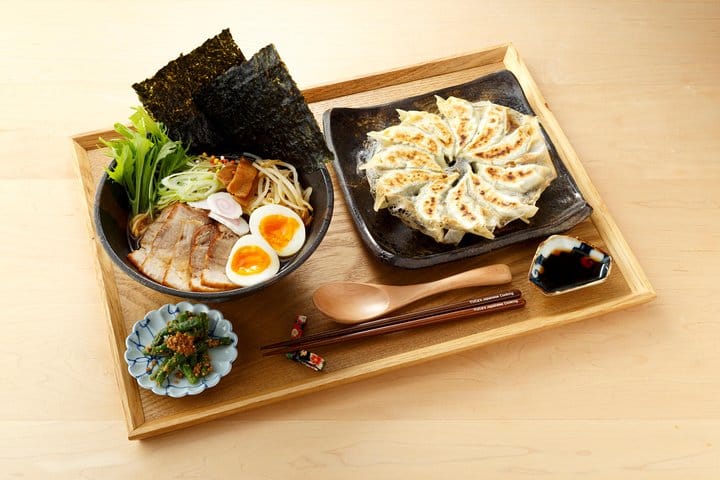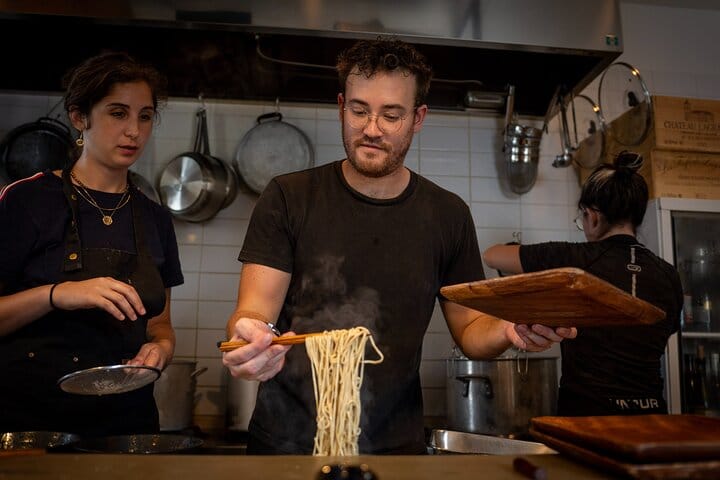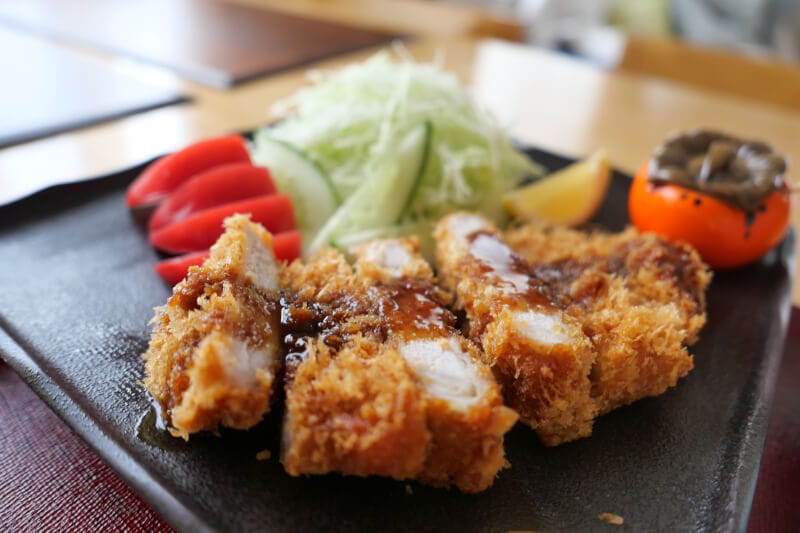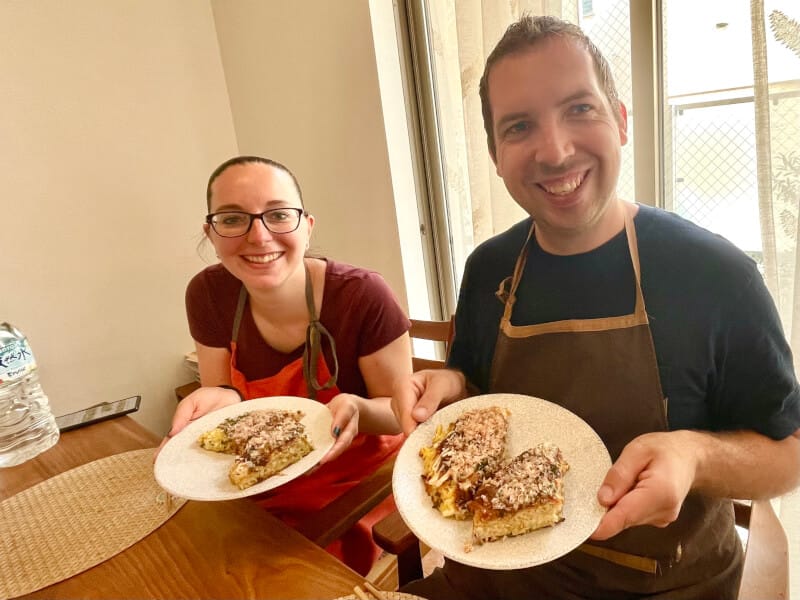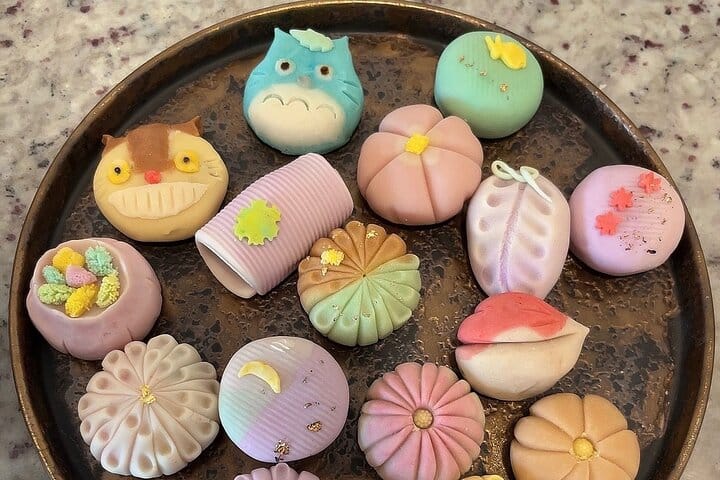In recent years, Japan has been welcoming about 3 million foreign tourists per month. Unique aspects of Japanese culture such as Washoku (Japanese cuisine) and Anime are gaining interest and popularity overseas.
Lately, there's been an increase in foreign tourists engaging in activities like go-karting, making Ramen or Wagashi (Japanese sweets), and watching Sumo shows. Beyond the typical travel itinerary of sightseeing and shopping, experiential activities that allow visitors to feel closer to Japanese culture through hands-on experiences are becoming popular.
If you're interested in Japanese cuisine, the activities we're about to introduce are perfect for you. You'll be able to experience authentic Japanese food that you can't taste at Japanese restaurants overseas.
What exactly is Washoku?
When we think of representative Japanese dishes, Sushi, Tempura, Tonkatsu, and Ramen come to mind. Japanese cuisine has spread globally due to its delicious taste and healthy image, but do you know what kind of meals are actually considered Washoku?
Washoku refers to the entire food culture of Japan. One of its main characteristics is the culture of respecting nature. Japan is blessed with diverse natural landscapes including seas and mountains. As a result, each region is rich in various ingredients, and Washoku is based on bringing out the flavors of these ingredients.
Another important element of Washoku is the expression of changing seasons, often achieved by decorating dishes with seasonal flowers and leaves, or using tableware and decorations that match the season or special occasions.
When you visit Japan, instead of just eating Japanese food, why not participate in a tour where you can make it yourself? We'll introduce you to tours that will surely become unforgettable memories.
For those who want to enjoy Japanese home cooking
Mayuko's Little Kitchen
source:Official website
At Mayuko's Little Kitchen, you can experience Japanese culture and home cooking up close. It's packed with simple recipes and techniques that you can use even after returning home.
Of course, you can learn to make representative dishes that come to mind when you think of Japanese cuisine, such as Sushi, Ramen, and Okonomiyaki. There are also classes where you can learn to make Salmon no Foil-yaki (salmon baked in foil), which may not be famous overseas but is a staple home-cooked dish for Japanese people.
You can make reservations for the cooking class through the official website. Reservation slots are released two months before each class. If you want to participate during your trip, be sure to make a reservation in advance.
Japanese Home Style Cooking Class in the City of Tokyo
source:TripAdvisor
This is a class where you can learn basic Japanese home cooking in a homey and relaxed atmosphere.
In Japanese homes, the menu prepared for one meal is called Kondate, and it usually consists of 3-4 dishes. In this class, you can make 3-4 dishes in two and a half hours, allowing you to experience the composition of a typical Japanese meal.
You can choose the menu when making a reservation. The options include Makizushi (a type of sushi roll), Nikujaga (a simmered meat and potato dish), and Misoshiru (miso soup) which is popular overseas as well. All of these are delicious home-cooked dishes that are staples for Japanese people, so choose the ones that interest you.
For those who want to experience making sushi
Tsukiji Tamazushi
source:Official website
At "Tsukiji Tamazushi," a long-established sushi restaurant that has been in business for 100 years, you can experience authentic sushi-making while being directly taught by professionals. This is a valuable experience where you can wear a white coat like a real sushi chef, stand at the counter to make sushi, and then taste the sushi you've made yourself.
There are three types of courses, and only the luxury course is available at a different location, so please be aware of this.
All courses are 90 minutes long and are packed with content, including not only making sushi but also grating Wasabi and watching the professionals' techniques up close.
Matsunozushi
source:Official website
At Matsunozushi, you can not only experience authentic sushi-making but also learn and experience Japanese culture firsthand. The class is taught directly by the fourth-generation owner of this 114-year-old established sushi restaurant, who also has extensive experience as a guide overseas.
Matsunozushi is known for its long history and abundance of high-quality seafood. If requested in advance, you can also experience a market tour to see firsthand how ingredients are sourced for customers.
True to the owner's words, "We're not serving sushi, we're serving Japanese culture," the sushi-making experience using authentic traditional crafts will undoubtedly become an unforgettable memory.
The ingredients used and the content of the experience can be flexibly adjusted according to your wishes, so it's recommended to consult by phone.
Sushi & Sake Tasting Cooking Class with a Visit to Local Supermarket in Tokyo
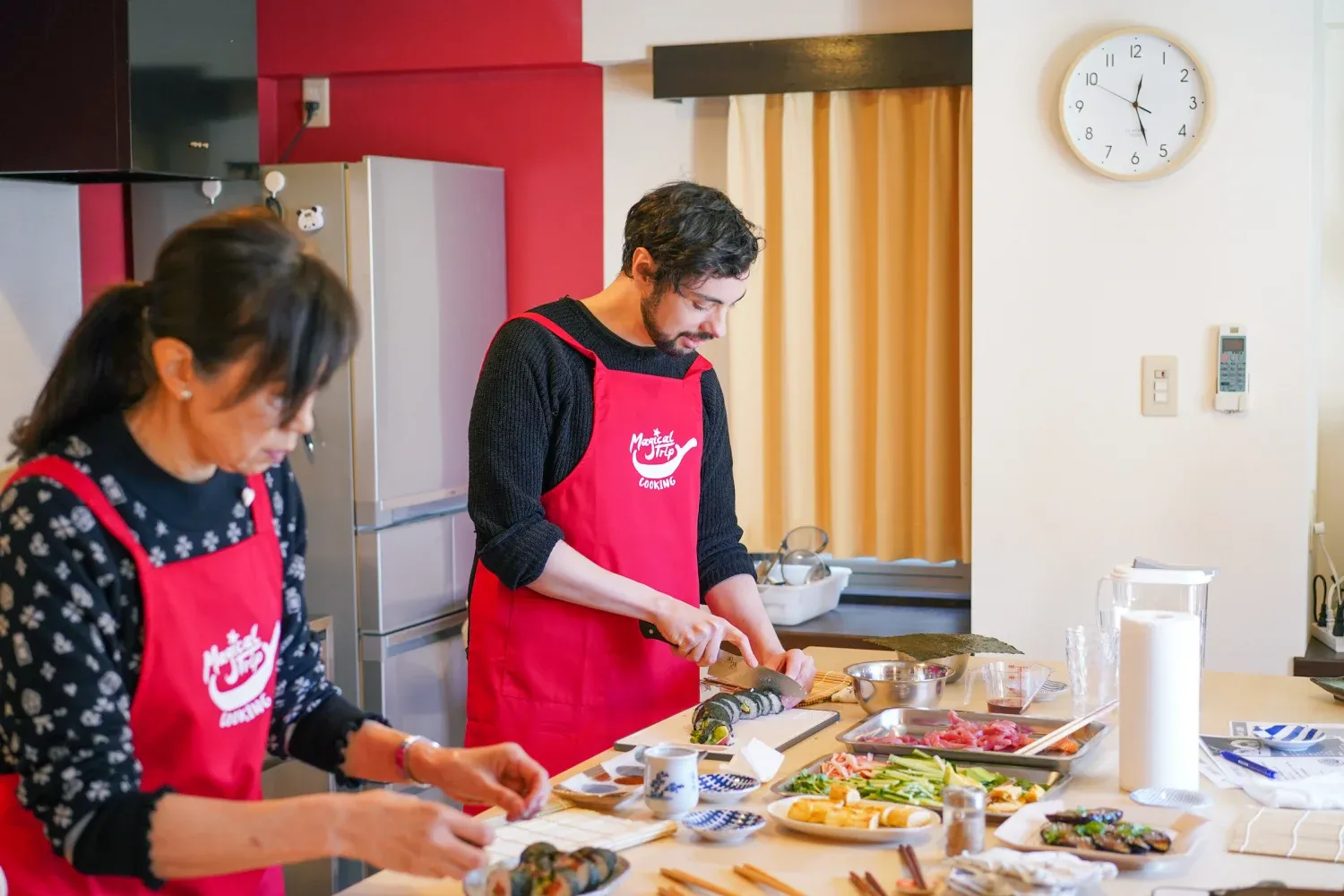
The biggest attraction of this class is that it starts with sourcing ingredients from a local supermarket. You can experience making traditional home-cooked dishes like rolled sushi, miso soup, and tamagoyaki (Japanese omelet) with the ingredients you've bought yourself. You'll receive recipes as a gift, so you can continue to enjoy Japanese home cooking even after returning home.
In addition to cooking, there's also a delicious sake tasting session prepared, allowing you to enjoy Japanese alcohol.
Also, right near this cooking class is "Kappabashi Dori," a street lined with shops selling all kinds of cooking utensils and tableware. It might be nice to stop by and buy some souvenirs so you can continue to enjoy Japanese cuisine when you return home.
A playroom for children is also available, which is a nice point for those participating with young children.
For those who want to make Ramen and Gyoza
No.1 Ramen and Gyoza Cooking Class in Tokyo + Supermarket Tour
source:TripAdvisor
At YUCa's Japanese Cooking, you can learn how to make Ramen and Gyoza in small groups.
The classes are held with a knowledgeable and friendly teacher and a maximum of 6 participants.
Ramen and gyoza have many steps in their preparation and can be difficult to make deliciously on your own. However, in this class, each step is taught carefully, and it's easy to ask questions, so you can participate with peace of mind even if you're not used to cooking.
The homey atmosphere makes it recommended for family participation as well.
Ramen and gyoza are usually made with wheat flour, but they can accommodate gluten-free options, so please consult in advance.
Professional Ramen & Gyoza with Ramen Chef in a restaurant!
source:TripAdvisor
If you want to experience authentic ramen making in an actual ramen shop kitchen, Baba Ramen is recommended. Here, you can learn how to make soup, noodles, and toppings from scratch.
You'll make two types of ramen soup: Paitan soup, which is a white, cloudy soup made with Tonkotsu (pork bones), and Seitan soup, which is a clear soup. A unique feature of this class is that you can experience everything from crushing the bones used in the soup to making the noodles from flour to the final product - details that even Japanese people may not know about ramen making.
Currently, they cannot accommodate vegetarians, so please be aware of this.
For those who want to make Tonkatsu
Tonkatsu, Katsu don, Japanese traditional Omelette all in one cooking class!!
source:airkitchen Official Website
This is a class where you can make Japanese home-cooked dishes such as Tonkatsu, Katsu don (a bowl of rice topped with tonkatsu), Tamagoyaki (Japanese traditional omelette), and Misoshiru (miso soup).
The class is held at the instructor's home in the suburbs, and the teacher is a housewife who has been cooking for her family for years. You can learn the home-cooked meals that Japanese people eat on a daily basis, so it's recommended for those who want to experience more local Japanese culture.
Please experience the warm, homemade cooking that you can't taste in restaurants. It's sure to be a memorable experience that you can't get just by visiting famous tourist spots.
For those who want to make Okonomiyaki
Okonomiyaki cooking and homestay-like experience in Eri's house!
source:airkitchin Official Website
This is a class taught by a cooking instructor with 18 years of experience in her own home, where you can make delicious Okonomiyaki. Fluffy and delicious okonomiyaki is a staple dish that Japanese people often enjoy with family and friends.
The typical ingredients include finely chopped cabbage, eggs, pork, and seafood, but one of the reasons for its popularity is that the cook can freely arrange the ingredients. In this class, it's possible to make a vegetarian version of okonomiyaki if requested.
Once you learn the ingredients and how to make it, okonomiyaki is surprisingly easy to make. If you stock up on Japanese-specific ingredients like sauce and Katsuobushi (dried bonito flakes), you can enjoy delicious okonomiyaki at home parties even after returning to your country. Be sure to buy some as souvenirs!
For those who want to make Wagashi (Japanese sweets)
Make Traditional Sweets Nerikiri & table style of tea ceremony
source:TripAdvisor
Just near Harajuku Station, you can experience making Nerikiri, a traditional Japanese sweet, and participate in a Japanese-style tea party.
Nerikiri is a delicate, beautiful, and highly artistic wagashi made using Shiroan (white bean paste). It's a sweet that can be enjoyed all year round, but its color and shape change with the seasons, expressing flowers and landscapes. Not only is it visually beautiful, but Nerikiri is also charming for its refined sweetness and smooth texture.
After making four different shapes of Nerikiri, a simplified tea ceremony is held on the table. You can enjoy various Japanese sweets with Matcha, experiencing a relaxing time.
Mochi Making Class in Tokyo
source:Tablecross
Did you know there are many types of sweets made with Mochi (rice cake)? In this class, you can make and taste Ichigo daifuku (mochi stuffed with strawberry and sweet bean paste), Dango (mochi balls on skewers), Warabimochi (mochi coated with Kinako, roasted soybean flour), and Isobemochi (mochi wrapped in Nori seaweed).
Enjoy the texture of mochi and the different deliciousness of each sweet along with matcha tea.
Wagashi are basically made from plant-based ingredients and rice, so vegetarians, vegans, and those following a gluten-free diet can enjoy them together. If you're concerned, it's recommended to inquire in advance.

